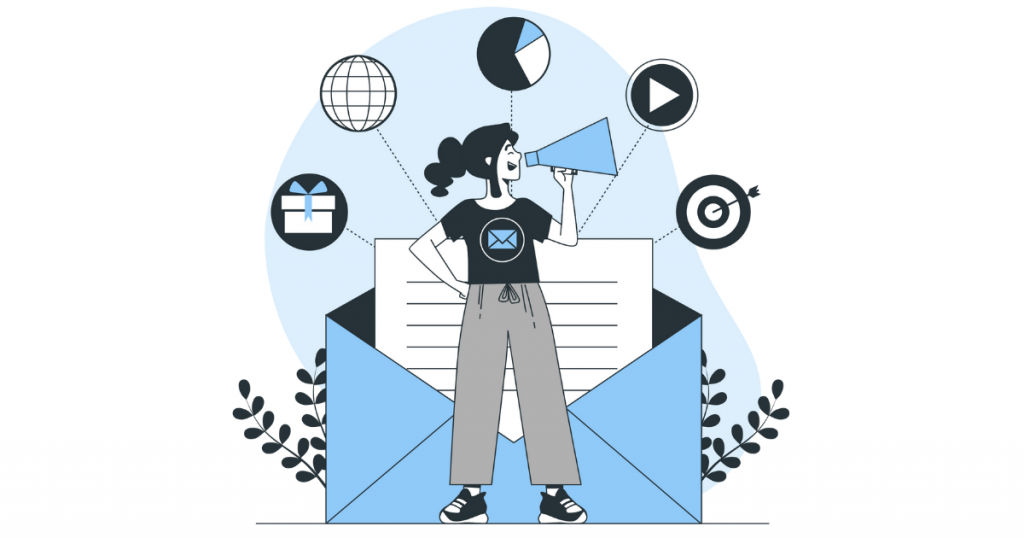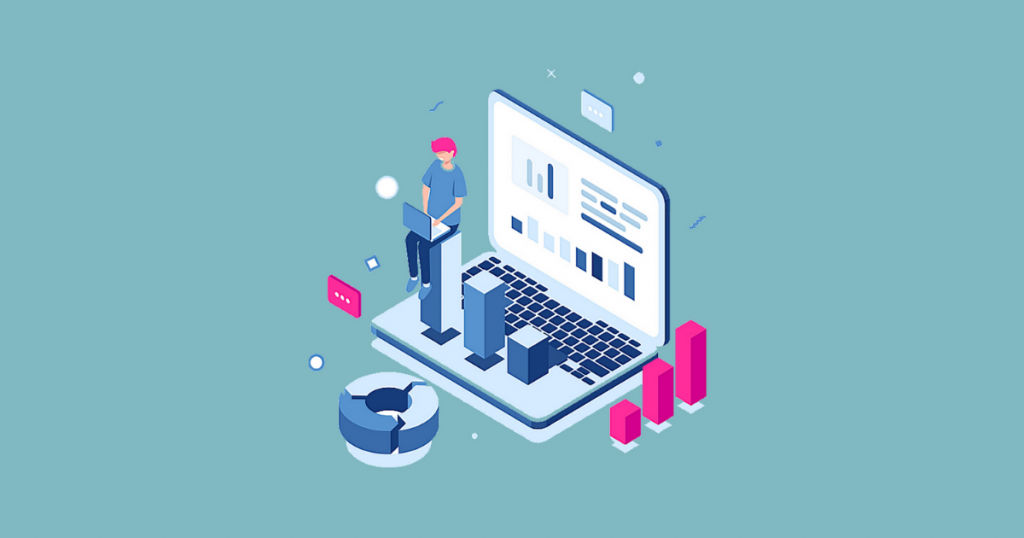
Email marketing is one of the most effective methods to drive sales. According to a report, 59% of purchase decisions are influenced by marketing emails. This offers a convenient way to reach a large audience in a much lesser time. However, a lot of effort and tactics go behind building the best strategy for email marketing to reap its maximum benefit.
Newsletters offer direct-to-consumer advertising. It helps build a personalized connection with the customers. Through newsletters, businesses can establish a brand value by directly connecting to the target audience and informing them about the latest updates in products and services.
It helps to build a relationship through personalized engagement. Newsletters often consist of creative content on relevant topics based on customer’s interests which can be easily accessed through mail or even Kindle for a quick read.
Table of Contents
Why should businesses choose newsletters?
Newsletters have only grown in popularity since the pandemic. About 83% of B2B companies now use newsletters as an integral part of their marketing campaigns.
Thanks to the benefits newsletters offer, it becomes an obvious choice for businesses to start their own newsletters. Some of those advantages are –
- Newsletters are highly cost-effective.
- They help in establishing a personalized brand by focusing on direct communication with the customers.
- They help in building a brand reputation.
- They build trust in the brand and promote customer retention.
- Newsletters help boost engagement on your website.
- They boost social media popularity.
- They enable a better understanding of customer needs for new campaign ideas.
- Newsletters increase sales and revenue.
10 proven email newsletter strategies

Drafting a newsletter requires a customized approach. It should be designed in compliance with the brand value that will help create awareness in the target audience. However, the quality of the content should be equally valued, to avoid annoying your potential customers or even end up in the spam folder.
Software like TinyLetter, Newsletter2Go, and NoCodeLetters are some of the easy-to-operate email marketing platforms to send out personalized newsletters.
According to a report, 92% of businesses value content quality as much as their business assets. Therefore, to reap maximum benefit, all the key points like customer interest, latest trends, and relevance to business should be kept in mind while designing an email newsletter.
Now let’s discuss 10 proven strategies to increase customer engagement –
1. Send welcome emails
According to a report, a well-designed welcome email can boost customer engagement by as much as 33%. Hence, it is preferred to send out a thread of initial emails for all the new subscribers before starting with the newsletters.
This may include a personalized “Thank you” message to show how grateful you are to have them as a part of your community. In addition, you can list out the benefits and long-term advantages of being a subscriber. This will leave a long-lasting positive impression on the customers.
You can also surprise them with a welcome gift. This increases the credibility of your business and aids faster growth in terms of popularity. These gifts may include discount coupons or temporary access to your paid services.
Furthermore, a welcome email can also talk about your company’s vision and brand values. Such insights will help the customers understand your approach and how your business stands out among the existing competition.
This also makes the subscriber feel like a part of something important other than just being a target for generating revenue. This increases the trust for a long-lasting association with the brand.
2. Add more visual appeal
With an average human having an attention span of just 8 seconds, it is important to keep the content of your newsletter crisp and appealing. A recent study has shown increased activity by 94% on the content containing high-quality images. Tools like Smore can be used for adding photos and even videos to your newsletters.
In addition, graphic images with lists, charts, and flow diagrams can be included in the newsletter to boost the content quality. You can also incorporate summaries followed by links to the website. This conveys the gist or purpose of the content and also increases website visits.
3. Adopt personalization
Personalizing a newsletter is about curating a balance between the interest of a company and that of a reader. Personalized experience has been found to drive 80% of consumers to make a purchase. Hence, a personalized newsletter can be used to lure potential customers to do business.
However, it is important to establish a good relationship with the subscriber before trying to sell your services. Otherwise, you may lose a customer and also a subscriber.
4. Create a well-defined sign-up process
A well-defined sign-up process catalyzes a better understanding of the customer. A list of questions with multiple choices can be used for your customers to choose from. This will help personalize the newsletter in terms of content preferences, areas of interest, and a suitable time and frequency for email newsletters based on the selections made at the time of subscription. This builds a brand-user connection and lets the subscriber know that you respect their preferences.
According to a report, personalized emails show 41% higher click rates than bulk or un-personalized emails. Hence, well-thought sign-up questions can serve as a reservoir for personalization decisions to lure customer’s interest.
Furthermore, the sign-up process can also be used to ensure that your newsletter reaches your audience instead of going directly into the Spam folder.
On average, 1 out of 6 emails in the inbox is sent to spam. So, to avoid this, a set of instructions can be put in place to whitelist your email address.

5. Encourage connection on other social media platforms
Engaging through multiple platforms increases instances of interaction and strengthens the brand-user bond. This helps consumers become an integral part of your online community to ensure a long-lasting association.
According to a report, 59% of the internet population utilizes social media services. You can drive your subscribers to follow you on other social media platforms like Facebook, Instagram, and Twitter to increase sales.
But instead of simply asking, you should give your subscribers a solid reason to associate with your brand on more than one platform. There are several available software that can be used to manage content across all social media platforms.
6. Know your TOFU, MOFU, and BOFU lead
TOFU (Top of the Funnel), MOFU (Middle of the Funnel), and BOFU (Bottom of the Funnel) refer to the category of the subscribers based on their stage of subscription. Different newsletters should be sent to the subscribers according to their subscription age.
New subscribers or TOFU are usually sent newsletters with generalized topics whereas old subscribers or BOFU can be targeted with a more specified approach like brand promotion to convert them into customers.
According to a report, 50% of the brands are only creating TOFU level content which is inhibiting them from converting leads into sales. Therefore, brands need to identify their potential customers and segregate newsletter content to eventually drive leads to generate revenue.
7. Categorize your subscribers
Apart from TOFU-MOFU-BOFU, there are other ways to segment the subscribers. It is based on their age, engagement frequency, location, work profile, age, and conversion to customer probability. Newsletters should be segregated similarly to attract specific targets.
However, this categorization should be kept completely unbiased. This means that the subscribers showing frequent activity should not be the only ones included to save effort. So, if you want to widen your business reach, it is essential to put in extra work to troubleshoot failed attempts and convert them to fruition.
Moreover, segmentation decisions should be made based on multiple actions rather than a one-time response. Different segments can be pooled if they possess similarities. This will reduce the workload and increase the size of the audience in each category.
Furthermore, old newsletters can be re-sent to the groups that showed a low response in the past. So, in case, they missed it, this will increase the chances of their retrieval. However, newsletters should not be re-sent as copy-paste material. A few changes like adding a catchy subject line, or including an incentive should be used to freshen it up. It is also important to not be pushy over responses if it doesn’t work the second time as well.

8. Promote discussions
While discussing the latest trends or any hot topic in your newsletter, make sure to prompt discussion among your readers. Such discussions will promote more responses and hence, activity on your page.
Moreover, to build a personal connection with your readers, it is important to have regular interactions. This will help you understand the customer’s personality and filter the future content accordingly.
9. Include interactive contests/games
Making newsletters interactive will always work in favor of your business. Organizing contests and games is the best way to get your audience involved. Games like “wheel of fortune” and giveaway contests can be organized to increase social media traffic.
However, unnecessary games should not be incorporated in the newsletter as they may distract the audience. So you should include them only on occasions or wherever found appropriate.
In addition, other strategies like “refer and earn” have shown to increase leads by 30% and can be used to boost sales from time to time. Such events can be advertised in newsletters to promote participation.
10. Promote feedback and welcome new suggestions
For every new strategy, it is essential to analyze the results regularly, especially by gaining feedback from the customers. Ask your readers to provide suggestions to improve the newsletter or your services in general.
And for every sale conversion that you gained through the newsletter, make sure that you reach out to know their experience. It will help in establishing a long-term association and may also attract new consumers by word of mouth.
Surveys are best suited for this purpose which can easily be organized using tools like SurveyMonkey, SmartSurvey, or SurveySparrow.
Conclusion
Newsletters are the future of personalized email marketing. Once established, it will reap benefits in building brand reputation, increasing traffic on the website, social media popularity, and eventually sales.
If you are a beginner, you can learn by following top newsletters and build strategies best suited for your business. And if you are looking for assistance, SaaSworthy can provide you with the best software recommendations. To know more, reach out to us as SaaSworthy.com






